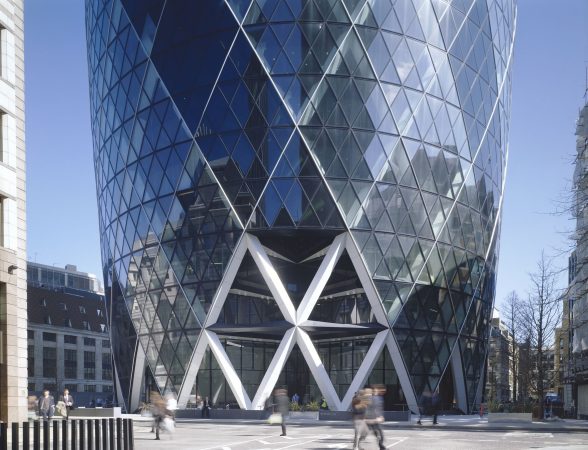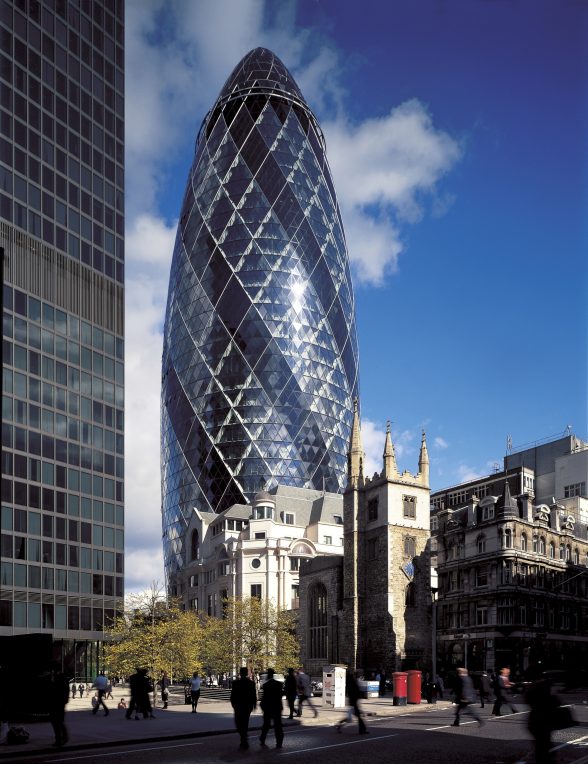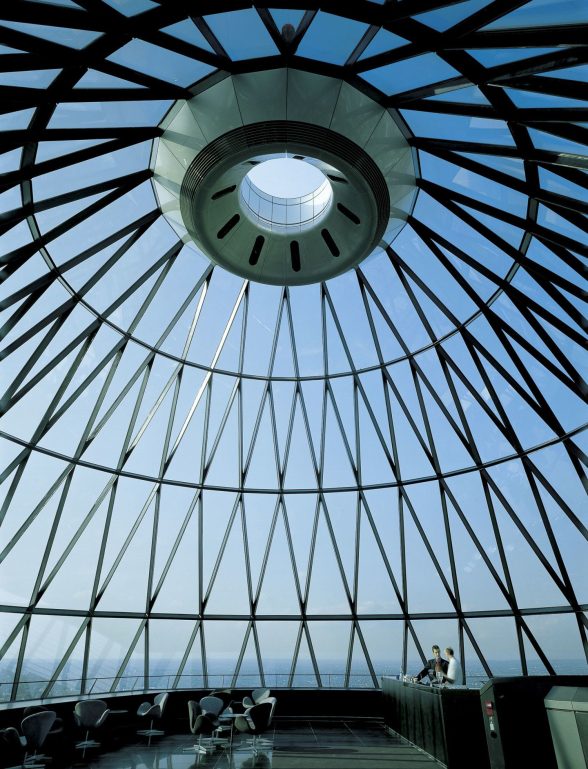This website uses cookies
This website uses cookies to enable it to function properly and to analyse how the website is used. Please click 'Close' to accept and continue using the website.



Image: Foster and Partners
C20 Society has welcomed plans by the City of London to create a new Creechurch Conservation Area, and recommended the proposed boundary be extended to include 30 St Mary Axe, commonly known as ‘the Gherkin’.
The Conservation Area would be the first designated in the City for more then two decades. Of the three options presented in the consulation, the Society’s preference is for ‘Option Three’ (see the full range here), but with boundaries slightly extended to the north and south-east, to include a brace of twentieth and twenty-first century buildings. C20’s proposal follows similar recommendations from fellow conservation organisations SAVE Britain’s Heritage and the Georgian Group, along with leading architectural historians and independent consultants, Alec Forshaw and Kenneth Powell.
Modern Heritage in the City
30 St Mary Axe has been internationally acclaimed as a major work by Foster and Partners, and is arguably the most important twenty-first century building in London. The Society believes it to be one of very few tall office buildings of recent date in London that must, in due course, be considered for statutory listing. Inclusion in the proposed Conservation Area would be a suitable interim step to that designation, and provide a measure of protection for its wider setting and key views.
It comes amid an increasing focus for C20 Society on Millennial architecture and design, and follows our recent listing applications for Alsop and Störmer’s Peckham Library (ultimately unsuccessful) and Herzog & de Meuron’s Laban Dance Centre (pending assessment).

Image: Foster and Partners
Erotic Gherkin
Designed by Foster + Partners in 2001-4 for the insurance business Swiss Re, the unmistakable 41-storey ‘Gherkin’ is a technically and environmentally-ambitious building which became an instant icon on the London skyline. A worthy recipient of the prestigious Stirling Prize in 2004, the building was extensively and highly reviewed upon its completion.
It was constructed on the site of the former Baltic Exchange and Chamber of Shipping (1903), which was damaged beyond repair by an IRA bomb in 1992. Foster + Partners unveiled controversial proposals for a 92-storey replacement known as the Millennium Tower in 1996, leading the Guardian newspaper to coin the memorable moniker, the ‘Erotic Gherkin’. These plans were ultimately dropped and superseded by the 30 St Mary Axe development, yet the name stuck.

Image: Foster and Partners
Generated by a circular plan, with a radial geometry, the building widens in profile as it rises and tapers towards its apex. This distinctive form responded to the constraints of the site: the building appears more slender than a rectangular block of equivalent size, and the slimming of its profile towards the base maximises the public realm at street level. A newly created piazza leads to an arcade of shops and cafés, while at the apex is a panoramic restaurant offering spectacular 360-degree views across the capital. Known as the ‘lens’, this feature recalls the glass dome that covered part of the ground floor of the Baltic Exchange, and contains the only curved glass on the façade of the building.
The tower’s diagonally braced structure allows column-free floor space and a fully glazed triangulated skin, developing ideas first explored by Buckminster Fuller. The building uses energy-saving methods, which allow it to use only half the power that a similar tower would typically consume. Gaps in each floor create shafts that serve as a natural ventilation system for the entire building. The shafts also create a giant double glazing effect, insulating the office space inside and reducing the reliance on air conditioning.

In addition to the Gherkin, the proposed Creechurch Conservation Area includes a fine collection of inter-war and post-war buildings, which relate well to one another, and create an interesting and varied streetscape.

Become a C20 member today and help save our modern design heritage.